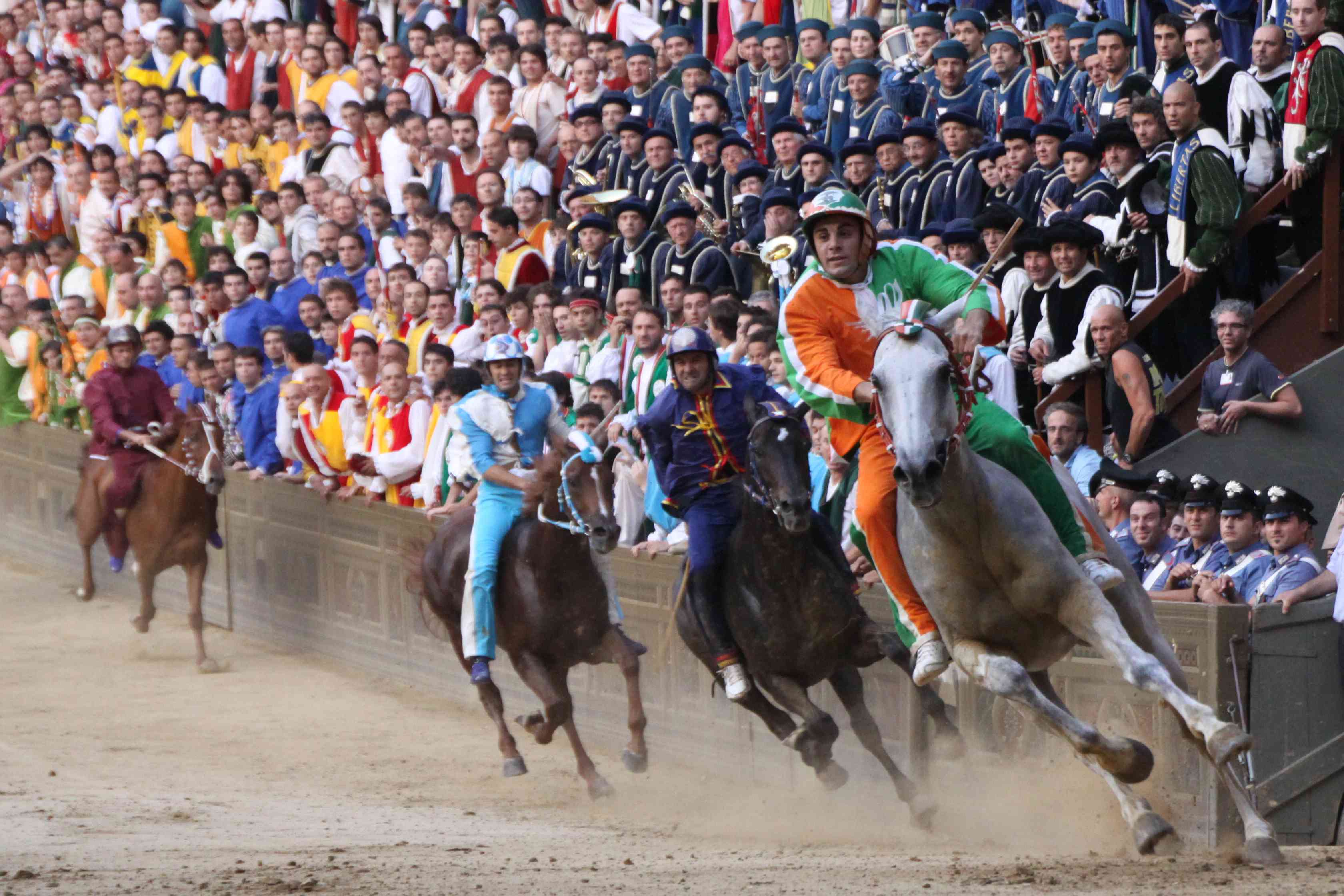Twice a year in Siena, crowds of people gather in the streets and ready themselves for a race unlike any other. The Palio di Siena.
The Palio di Siena dates back to either the 13th century when some historians believe it started as military exercises. Initially, they raced with buffalos, then donkeys, until finally, horses became the popular choice. Now the race is run to honor Mary, the Mother of Jesus. The festivities take place over four days and draws up to 40,000 people every year.
The first day of the festival is devoted to assigning the spots in the race. Historically seven contrades, or neighborhoods, are reserved spots if they didn’t compete in the previous year, while the other ten draw lots for the three remaining openings. Though the contrades have their jockeys selected beforehand, the horses are assigned randomly on opening day.
The actual race is held on the fourth day of the festival to give the jockeys and horses time to run six practice races. However, there’s more than racing happening in the following days. The Palio di Siena is notorious for its lawless nature. Many jockeys are offered bribes from opposing contrades to better their winning chances. There have also been tales of drugged horses and kidnapped jockeys. Despite this unsavory reputation, the Palio di Siena is treasured by many Italians.
On race day, a parade leads the jockeys and horses through the streets to the starting line in the Piazza del Campo. Nine of the ten racers are called to position while the tenth racer then gallops in signaling the races start. If the other jockeys are not ready when the tenth arrives, it is called a false start, and they must reassemble. This can go on for some time because of the intense rivalry between the contrades.
Once the race begins the jockeys ride bareback through the city streets, racing three times around treacherously tight corners. The best part is, if the jockey is unseated, the horse can still win the race on its own.
The winning contrade receives the Drappellone, a silk banner with the image of the Mother Mary on it. The jockey and horse are taken to either one of two places, the church of Santa Maria in Provenzano in July or the Duomo in August, to receive a special blessing. The winners celebrate with pacifiers in their mouths and baby bottles filled with champagne to symbolize the rebirth their victory has given the contrade.
The race occurs on July 2 in honor of Madonna of Provenzano and August 16 for the Assumption of Mary. Unfortunately, like most summer events, the Palio di Siena has been canceled due to COVID-19. This race has only been canceled two other times in the past, during 1940 and 1944.
Eager fans will just have to wait until 2021 to see what the Palio di Siena has in store for them.
Sources:
- Siena Horse Race[Discover Tuscany]
- Palio 2020 Canceled [Tuscan Trends]
- Palio di Siena [New York Times]
- Palio Q&A [Ilpalio.org]
- Feature Picture [Wikimedia]




